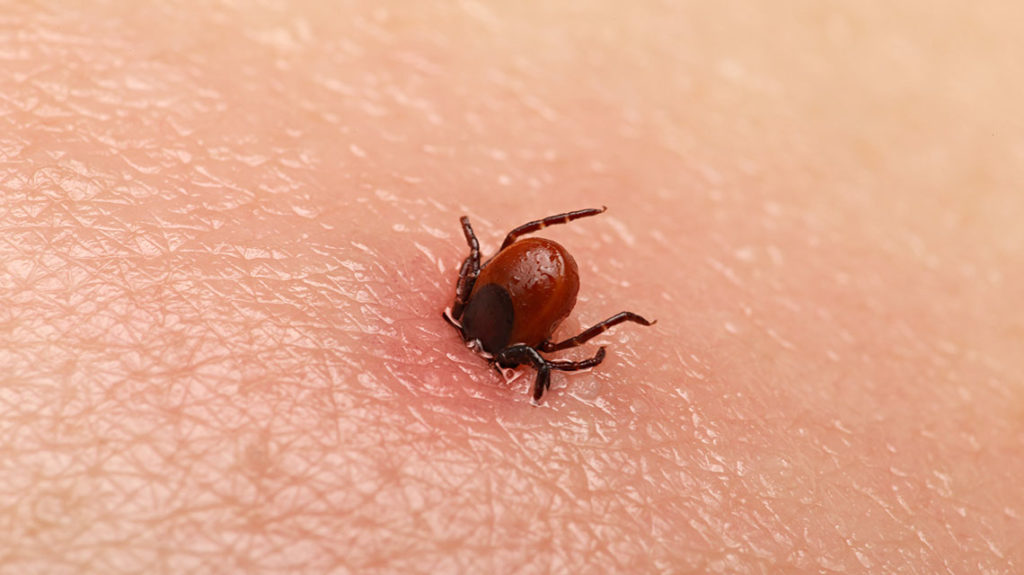What You Need to Know About Tick-Borne Diseases
What You Need to Know About Tick-Borne Diseases https://pediatricsnationwide.org/wp-content/uploads/2019/07/AdobeStock_85207907-tick-header-1024x575.jpg 1024 575 Mike Patrick, MD Mike Patrick, MD https://pediatricsnationwide.org/wp-content/uploads/2021/03/Michael-Patrick.jpg- July 01, 2019
- Mike Patrick, MD

Update: July 2021, this content has been reviewed for accuracy. The downloadable practice tool has been replaced with an updated version.
Ranges of disease-carrying ticks are shifting in the United States. Combined with family travel, this means physicians and families should have a wider lens on what tick-borne diseases they might encounter.
Ticks represent a major vector for the transmission of human disease. Their abundance and geographic range have expanded in recent years, largely due to climate change.1 Ticks live in tall grass, brush and wooded areas and may be encountered while hiking, camping, gardening or simply enjoying a picnic or playing in the yard. Consequently, the frequency and variety of tick-born illness presenting to medical providers is on the rise.
Here is what you need to know.
How to Remove a Tick
The best method of removal is steady, even pressure with fine-tipped tweezers grasping the tick as close to the skin as possible. Tick-removal tools are also available, which slide between the tick’s body and skin surface. Dispose of the live tick in alcohol or a sealed bag/container and clean the affected skin with soap and water.
Common Ticks and Associated Diseases
American Dog Tick This large brown tick inhabits all states east of the Rocky Mountains and coastal regions of California. Adults range from 5 mm (unengorged) to 15 mm (engorged). Also known as the wood tick, they are most abundant during spring and early summer. Diseases transmitted by the American Dog Tick include Rocky Mountain spotted fever (RMSF) and tularemia.
Brown Dog Tick Compared to the American Dog Tick, these are lighter in color and smaller in size (3 mm, unengorged; 12 mm, engorged). While they are present throughout the entire continental Unites States, those living in the southwest and along the U.S.-Mexico border have the highest risk of transmitting RMSF.
Blacklegged Tick Also known as the Deer Tick, this is the primary vector for Lyme disease. Nymphs are active during the spring, summer and fall and easy to miss because of their small size (1–2 mm, unengorged). Adults are about the size of a sesame seed (unengorged) and active year-round, including winter days with above freezing temperature. Once confined to New England and the Upper Midwest, blacklegged ticks now inhabit the Great Plains (from eastern North Dakota to the tip of Texas) and all points east. Other transmitted diseases include anaplasmosis, ehrlichiosis, babesiosis and Powassan virus disease.
Lone Star Tick This is a very aggressive tick that is widely distributed in the southeast, lower Midwest and eastern United States. It is a large tick (5 mm, unengorged; 15 mm, engorged) and distinguished by a white dot (the “lone star”) on the back of adult females. Lone Star Tick saliva can be irritating, resulting in redness and discomfort that mimics a secondary bacterial skin infection. There have also been reports of allergy to red meat, including beef and pork, following sensitization to alpha-gal, a carbohydrate in this tick’s saliva. Diseases associated with the Lone Star Tick include ehrlichiosis, Heartland virus, tularemia and STARI.
Gulf Coast, Rocky Mountain Wood and Western Blacklegged Ticks These ticks transmit human diseases but have more limited geographic distribution. The Gulf Coast Tick lives along the Atlantic and Gulf coasts (from Virginia to Texas) and is associated with a form of spotted fever known as Rickettsia parker rickettsiosis. The Rocky Mountain Wood Tick is confined to elevations between 4,000 and 10,500 feet in Rocky Mountain states and southwest Canada. It can transmit RMSF, Colorado tick fever and tularemia. Western Blacklegged Ticks reside along the Pacific coast (particularly northern California) and western Utah. They serve as a vector for anaplasmosis and Lyme disease.
New Viruses in Ticks
Scientists are discovering new RNA viruses living in the tick microbiome, but their relationship to human disease and public health remains unknown.2 Because of the variety and potential seriousness of tick-born illness, patients should seek prompt medical advice whenever a tick bite is followed by skin redness, rash, fever, joint pain or other worrisome symptoms.
When medical providers suspect a tick-borne illness but are uncertain how to proceed, their local health department or an infectious disease specialist can assist with diagnosis and treatment.
A clinical guide to tick (and mosquito) borne illness in children is available here. Tick and Mosquito Borne Diseases – 2021 Update
You can learn more about Lyme disease on our pediatric podcast for providers.
References:
- Sonenshine DE. Range Expansion of Tick Disease Vectors in North America: Implications for Spread of Tick-Borne Disease. International Journal of Environmental Research and Public Health. 2018:;5(3):478.
- Vandegrift KJ. The Ecology of New Constituents of the Tick Virome and Their Relevance to Public Health. Viruses. 2019;11(6):E529.
Photo credit: Adobe Stock
About the author
Michael D. Patrick, Jr, MD is a member of the Section of Emergency Medicine, medical director of Digital Health for Nationwide Children's Hospital, and an assistant professor of Clinical Pediatrics at The Ohio State University College of Medicine. His clinical interests include helping sick and injured children in Nationwide Children's off-site urgent care network and the main campus emergency department. He is also interested in parent and patient education. Since 2006, he has hosted and produced PediaCast: a pediatric podcast for parents. This popular program covers news parents can use, answers listener questions, and interviews pediatric and parenting experts. PediaCast is the most-listened-to online source of pediatric information with over four million downloads to date. PediaCast is available wherever podcasts are found.
-
Mike Patrick, MDhttps://pediatricsnationwide.org/author/mike-patrick-md/December 30, 2014
-
Mike Patrick, MDhttps://pediatricsnationwide.org/author/mike-patrick-md/September 22, 2022
- Posted In:
- Clinical Updates
- Features








